Unabridged: a Charlesbridge Children's Book Blog

Hail Caesar! The Other One . . . 0
by Rob Chirico
 Like so many changes in life, when I set out to write Not My Mother’s Kitchen: Rediscovering Italian-American Cooking through Stories and Recipes, my working title was “Escape from an Italian-American Kitchen.” My premise was a simple one: How I learned to cook after growing up in an Italian-American household where my mother brought love to everything—except cooking. The dear woman, now 96-years old, was a disaster at the stove—or, as I waggishly call her in my book, an “assassin in the kitchen.” Left to her own devices she laid waste to spaghetti, hamburgers, and even salad. “Fresh” was not a word she used, unless it was leveled at me—and deservedly so. Although I often joked that I began to cook as a defense against my mother’s cooking, my venture eventually served as a springboard for a cookbook featuring the recipes and techniques I have cultivated over the years. Naturally, there is my humorous take on growing up with my mom’s suspect food, but I also share traditional recipes, my recipes, as well as fun, historical info about food and recipes. Take the Caesar Salad.
Like so many changes in life, when I set out to write Not My Mother’s Kitchen: Rediscovering Italian-American Cooking through Stories and Recipes, my working title was “Escape from an Italian-American Kitchen.” My premise was a simple one: How I learned to cook after growing up in an Italian-American household where my mother brought love to everything—except cooking. The dear woman, now 96-years old, was a disaster at the stove—or, as I waggishly call her in my book, an “assassin in the kitchen.” Left to her own devices she laid waste to spaghetti, hamburgers, and even salad. “Fresh” was not a word she used, unless it was leveled at me—and deservedly so. Although I often joked that I began to cook as a defense against my mother’s cooking, my venture eventually served as a springboard for a cookbook featuring the recipes and techniques I have cultivated over the years. Naturally, there is my humorous take on growing up with my mom’s suspect food, but I also share traditional recipes, my recipes, as well as fun, historical info about food and recipes. Take the Caesar Salad.
Everyone knows the basics of a Caesar Salad, yes—or no? To give a little background first, according to Caesar Cardini’s daughter, Rosa, the restaurateur whipped up the dish on the Fourth of July of that year when a rush on the restaurant depleted the kitchen’s supplies. As the story goes, Cardini made do with what he had, all the while entertaining his clientele by tossing the salad personally for his guests. At the time of its creation, Cardini was living in San Diego but working in Tijuana. If this seems like a curious arrangement, it was because the year was 1924, and the United States was in the throes of one of its greatest follies, the Great Experiment: Prohibition. You don’t have to believe me, but at that time booze was a bigger business than salads. That it was created in Mexico, however, may have made all the difference as to one of the seemingly essential initial ingredients: lemons.
A significant, but little known difference is that key limes were used in the original recipe, and not lemons. The change was not due to shifting taste, but to a problem in translation. When the salad was created in Mexico, the word for “lime” in Latin American Spanish was limón. I was personally confronted with this dilemma in Buenos Aires, where limes are a scarcity, despite their immense popularity just across the border in Brazil. When I asked a fruit vendor for limas, I was greeted with a curious look and asked what that was. “Limón verde?” I inquired. Aware that he had no idea of what I was talking about, I replied that it was something between a lemon and a gin and tonic.
Another change from Cardini’s original recipe was anchovies—there were none. Cardini was apparently opposed to using anchovies in his version. The faint taste of anchovies from the Worcestershire sauce was sufficient for him. While I do see Cardini’s point about the anchovies, I like their saltiness. My compromise is a dash of Thai fish sauce. I also prefer to shake the dressing in a jar to emulsify it slightly. I use raw organic free-range eggs, but if you are uncertain about your eggs, you can “coddle” them by very briefly immersing them in their shells in boiling water. So, without further ado, I give you my version.
Caesar Salad My Way
1/4 teaspoon each coarse or kosher salt and freshly ground pepper, or more to taste
2 tablespoons good quality white wine vinegar (preferably aged Italian)
2 tablespoons freshly squeezed lime juice
1 large crushed and minced garlic clove
1 teaspoon Dijon mustard
1 teaspoon Worcestershire sauce
1 tablespoon Vietnamese or Thai fish sauce
2 egg yolks
1/2 cup extra-virgin olive oil
3 romaine lettuce hearts, chopped widthwise into 1-inch ribbons, or leaves left whole
1/2 cup freshly grated Parmigiano
1 cup croutons
- Mix all of the ingredients up to the lettuce in a jar and set aside. You may refrigerate the dressing briefly.
- Place the romaine lettuce on a large platter and toss with the Parmigiano. Top with the croutons. Shake the jar of dressing and toss it with the salad. Serve immediately, passing extra pepper and cheese if desired.
 Rob Chirico is a freelance writer and artist whose work has appeared in the food journal Gastronomica. Previous works include Field Guide to Cocktails (Quirk Books) and Damn! A Cultural History of Swearing in Modern America (Pitchstone Press). Mo Rocca, host of My Grandmother's Ravioli called Rob's new book, Not My Mother's Kitchen, "a funny, loving, and oh-so-useful manual on food, family, and survival when your mom is a terrible cook." He lives in Western Massachusetts.
Rob Chirico is a freelance writer and artist whose work has appeared in the food journal Gastronomica. Previous works include Field Guide to Cocktails (Quirk Books) and Damn! A Cultural History of Swearing in Modern America (Pitchstone Press). Mo Rocca, host of My Grandmother's Ravioli called Rob's new book, Not My Mother's Kitchen, "a funny, loving, and oh-so-useful manual on food, family, and survival when your mom is a terrible cook." He lives in Western Massachusetts.
- Cindy Ritter
- Tags: Cooking Italian-American Not My Mother's Kitchen Rob Chirico

Happy 100th Birthday, National Park Service! 0
The National Park Service turns 100 on August 25, 2016. In case you've ever wondered, "Why was a national park service important?", author Annette Bay Pimentel answers that very question in the back matter of her new picture book biography, Mountain Chef: How One Man Lost His Groceries, Changed His Plans, and Helped Cook Up the National Park Service, illustrated by Rich Lo:
"In 1872 Yellowstone was declared the first national park. In 1911 President William Howard Taft recommended the formation of a national park service, but he failed to whip up enough enthusiasm among members of Congress. By 1915 there were eleven national parks--but no system of administering the parks.
In January 1915 Stephen Mather was appointed assistant secretary of the interior by President Woodrow Wilson. Mather was determined both to protect the national parks and to share them with all Americans. Appalled at the bureaucratic red tape in Washington, DC, he dreamed up a camping trip that would change hearts and minds."

From Mountain Chef. Text copyright (c) 2016 by Annette Bay Pimentel.
Illustration copyright (c) 2016 by Rich Lo.
According to the National Park's website, "The centennial will kick off a second century of stewardship of America's national parks and engaging communities through recreation, conservation, and historic preservation programs."

From Mountain Chef. Text copyright (c) 2016 by Annette Bay Pimentel.
Illustration copyright (c) 2016 by Rich Lo.
In honor of this momentous occasion and also to celebrate the August publication of Mountain Chef, Charlesbridge is excited to offer a special promotion: Order Mountain Chef on our website and receive a 25% discount. Enter promo code NPS100. (Offer expires September 30, 2016.)
We'd also love to know your favorite national parks and which ones you are visiting this year in honor of the centennial--feel free to share your thoughts with us in the comments below.
Cheers to 100 more years of our beautiful national parks!

From Mountain Chef. Text copyright (c) 2016 by Annette Bay Pimentel.
Illustration copyright (c) 2016 by Rich Lo.
Resources:
Mountain Chef
National Park Service Centennial (#NPS100)
Find Your Park (#FindYourPark)
Other Charlesbridge books about our National Parks:
Family Pack
Out on the Prairie
Mule Train Mail
John Muir Wrestles a Waterfall
- Cindy Ritter
- Tags: Annette Bay Pimentel Mountain Chef National Park Service NPS100 Rich Lo

Top 10 Surprises from a Yankee Editor in Germany 1
By Julie Bliven
In late June I traveled to Germany with seven other children’s book editors hailing from the US, UK, New Zealand, and Canada. Beginning in Hamburg and ending in Frankfurt, we met with about a dozen publishers to talk shop and learn about the German book market.
The trip was sponsored by the German Book Office of New York, which is co-financed by the German Foreign Office and is one of the Frankfurt Book Fair’s arms into foreign markets. The GBO encourages interest in German books by promoting rights and license sales and book exports through special book exhibitions, literary programs, and exchange programs (like this one) for publishing professionals.
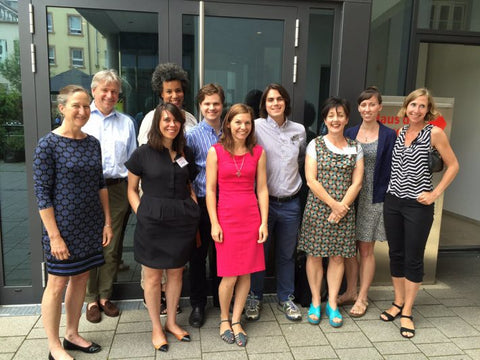
The German Book Office group (from l to r): Hilary van Dusen, Executive Editor, Candlewick Press (US); Juergen Boos, Frankfurt Book Fair Director; Kristin Zelazko, Editor, Albert Whitman & Company (US); Traci Todd, Executive Editor, Abrams Books (US); Anthony Hinton, Editor, David Fickling Books (UK); Paula Ayer, Associate Manager, Annick Press (Canada); Greg Hunter, Senior Editor, Lerner Publishing Group (US); Rachel Lawson, Associate Publisher, Gecko Press (New Zealand); Julie Bliven, Editor, Charlesbridge Publishing (US); and Riky Stock, German Book Office New York Director.
For me, the experience served as a rare opportunity to compare and contrast the German and American publishing industries. Here’s a list of a few of the things I found most fascinating and, in many cases, most surprising.
-
German publishers import nearly ten times as many titles as US publishers do. I’m not sure the exact reasons for this. Part of it could be the fact that creative writing in Germany has only developed more recently. The country doesn’t have programs like SCBWI nor a plethora of homegrown, contemporary authors. On the flip side, there may be a discrepancy between the two countries because the US could be less apt to publish MG and YA stories from a non-American point of view (one discussion point that came up). US picture books, however, definitely reflect more diversity in terms of race, ethnicity, gender, sexual orientation, socioeconomic status, physical abilities, and religious beliefs than we were seeing from German picture books, and publishers admitted that the German book industry has not made a deliberate shift toward embracing a stronger sense of inclusivity. Throughout the trip, conversations about We Need Diverse Books and the expanding mindset of US publishers and all industry participants had us all believing and hoping that America’s publishing approach is indeed changing. Perhaps this could eventually translate into an increase in imports to the US.

Discussing books and drinking tea at Aladin Verlag in Hamburg, Germany.
- Given #1, many German publishers are eager to find and nurture more homegrown talent so they can decrease imports and increase promotional signings and events led by local authors. A couple publishers have even had success recruiting popular German adult fiction writers to author children’s fiction for them.
- The German school and library market is much smaller than the one in the US. Due to lack of funding, these markets are unable to buy at the same rate that we’re used to, and so German publishers don’t strategize toward these markets. Literary awards as well as blog posts from well-known teachers and librarians are also less influential.
- The German market has a fixed book price, which is protected by law. Discounts can only be approved by publishers.
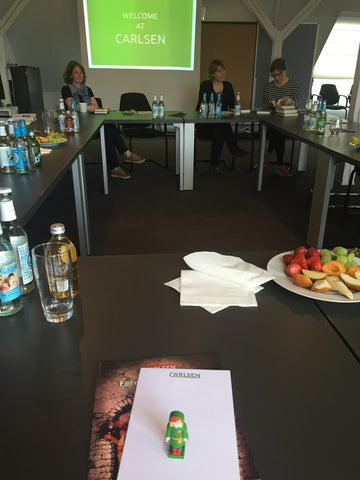
All ready for a meeting at Carlsen Verlag in Hamburg, Germany.
- Booksellers in Germany are required to train extensively—for two years! German publishers see booksellers as the ultimate gatekeepers.
- Legally, German bookstores have six months to return books, but a few publishers admitted that stores sometimes fudge on the rule and look to return long after.
- German authors are compensated by their publisher for bookstore and other promotional events and signings.
- Very few of the publishing houses we met with have their own in-house design department. Most German publishers use freelance designers. A few houses see this as bittersweet, for their jackets all have strong, unique designs, but they admitted that working with various designers means readers might not recognize a branded “look.”
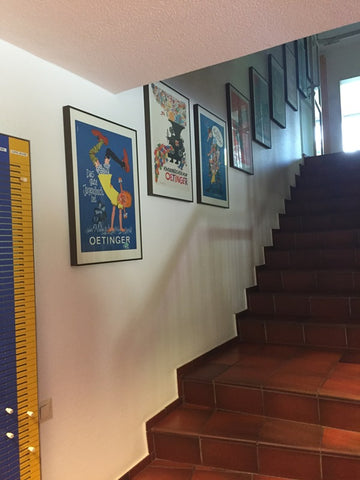
Oetinger Publishing Group's office in Hamburg, Germany.
- Middle-grade series are wildly popular, seemingly more so than in the US. Most houses we met with had several middle-grade series with five-plus volumes and plans for many more.
- Nonfiction is not as prevalent or as diverse in Germany as in the US. Few publishers we met with acquired and developed much nonfiction. In 2014, children’s nonfiction made up 9.5% of total German children’s book sales. Here in the US, children’s nonfiction grew by more than that in 2015 alone. (I was unable to find an accurate total percentage of nonfiction children’s titles in the US.) Sources from Publishers Weekly to Publishing Trends continue to report growing nonfiction trends over the past several years.
I have to admit that there are practices in Germany I wish we could adopt here. (I’m looking at you, fixed book prices.) And, of course, there are aspects of publishing in the US that I’m grateful for and wouldn’t want to change. (Our school and library markets to name one.)
Despite our differences, though, we all share the same goal: to publish a wide range of well-crafted, thoughtful books for children that align with the unique identities of our individual publishing houses. Both countries are deeply entrenched in the customs and practices of a decades-old business. However, learning from each other seems to be one way we can both continue to uphold what works well while seeking ways to improve traditions and systems that need some shaking up. Prost to that!
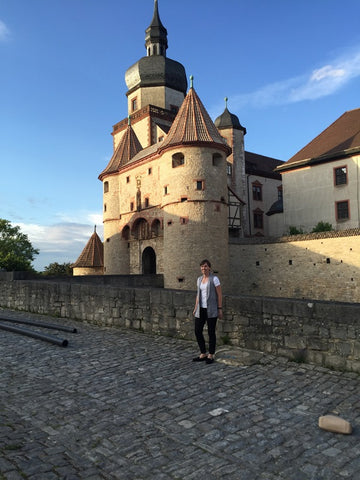
And prost to a little fortress frolicking in our free time.
Here I am at Festung Marienburg in Würzburg, Germany.
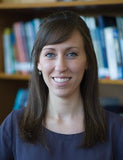 Julie Bliven is editor and contracts manager at Charlesbridge, where she has edited more than forty titles, including fiction and nonfiction board books, picture books, and middle-grade novels. She has worked with authors such as Anne Sibley O’Brien, Steve Jenkins, Peter and Paul Reynolds, and Natalie Dias Lorenzi. Julie holds an M.A. in Children’s Literature from Simmons College, mentors writers in the college’s M.F.A. program, and has taught writing courses at the Jewish Community Centers of Massachusetts. She is also a member of the Children’s Book Council Diversity Initiative and wrote a post for their blog about her trip, "Bookish Reminders Here and Abroad". @Julie_Bliven
Julie Bliven is editor and contracts manager at Charlesbridge, where she has edited more than forty titles, including fiction and nonfiction board books, picture books, and middle-grade novels. She has worked with authors such as Anne Sibley O’Brien, Steve Jenkins, Peter and Paul Reynolds, and Natalie Dias Lorenzi. Julie holds an M.A. in Children’s Literature from Simmons College, mentors writers in the college’s M.F.A. program, and has taught writing courses at the Jewish Community Centers of Massachusetts. She is also a member of the Children’s Book Council Diversity Initiative and wrote a post for their blog about her trip, "Bookish Reminders Here and Abroad". @Julie_Bliven
- Cindy Ritter
- Tags: Children's Book Publishing German Book Office Julie Bliven

The 2016 Summer Olympics: Ready, Set…Technology? 0
By Jennifer Swanson
The Summer Olympics are just about to start. Hundreds of athletes are converging on Rio de Janeiro for the most important event of their athletic careers. These athletes have trained thousands of hours, honing their skills, pushing their bodies to the limit over the span of many years for just this moment. They are focused on one goal: taking home an Olympic medal.

While of course the athletes’ preparation is paramount, the equipment they’ll be using is also very important. In my latest book, Super Gear: Nanotechnology and Sports Team Up, I examine how high-performance sports are using cutting-edge technology to enhance athletes’ performances in Olympic competitions. Nanotechnology is the science of the very small…microscopic even. A nanometer is nearly 100,000 times smaller than a single human hair and yet it can be used to make amazingly strong materials. That’s what the Olympic athletes are counting on—high tech equipment to aid them in their quest to win a medal. So as they are packing their shoes, their swimsuits, their tennis rackets and golf clubs, their bicycles, and running suits, let’s consider the technology behind the equipment the athletes will be bringing along.
What type of technology might we be seeing in the 2016 Olympics?
Sports gear companies hire experts and technicians and spend hundreds of millions of dollars creating the most high-tech equipment possible for athletes. Speedo, Nike, and Under Armour have actually used wind tunnels at NASA to help create their swimsuits and running gear.

Compression-swimsuit technology at work for US swimmer Missy Franklin.
From Super Gear. © BrunoRosa/Shutterstock.com
Speedo has updated their LZR swimsuits by creating them with a high-compression fabric. The suit is designed to push in on the muscles around the hips and upper thighs, thus making the swimmer more streamlined like a shark. The women’s suits have a specially designed “X” seam across the body. This is supposed to make the core (stomach, abdomen muscles) work more effectively and keep the swimmer’s body level in the water. This reduces drag, the force that pulls back on the swimmer as they glide through the water, which slows them down.
Click here to see what the US men’s and women’s Olympic swimming teams will wear.
Bobolat, Wilson, Yonex are using nanotechnology in the form of carbon nanotubes to make their tennis rackets stronger and more durable.
Runners are also utilizing the cutting-edge technology. Athletes like the US’s Allyson Felix will be wearing specially designed techno uniforms that have raised bumps to make her more aerodynamic (like an airplane). This reduces drag and helps her to speed through the air faster.
And golf is not left out of the technology craze. Graphite and carbon fibers are added to golf clubs to help athletes hit the ball farther and longer than ever before.

Nanofibers are added to the resin of the golf club shaft
to close up the gaps between the strands of graphite.
From Super Gear. © Sophia M. Gholz
Why is technology being incorporated into sports events?
Money. It comes down to the fact that all of these sports companies are hoping that if you, the regular consumer, watches an Olympic athlete win a medal, you will want to go out and buy their equipment. The swimsuit industry is worth over $1 billion. Spending a few hundred million to get the most out of your equipment is not much for some of these big companies.
Is it actually worth it?
The answer is YES! In the 2008 Olympics, the swimmers who wore the nanotechnology-enhanced swimsuits not only won all of the medals, but broke over 100 new Olympic speed records. The swimmers in the 2015 Championships who wore either Speedo or Arena suits won the greatest percentage of medals.
Roger Federer, a world-class tennis player has used his nanotech tennis racket for the past several years to great success. Serena Williams uses a carbon-fiber racket.

US tennis star Serena Williams with her “enhanced” racket.
From Super Gear. © Neale Cousland/Shutterstock.com
Is using this technology fair?
That is a question up for debate. It is true that the athletes that have the equipment appear to be performing better than the athletes that don’t. Is that solely due to the techno-enhanced tools? No one knows for sure. Training. Diet. Health of the athlete. Temperature and weather at the time of the event. These are all factors. To say that the technology of the equipment was the only thing responsible is not possible.
One factor that may make the use of technology seem unfair is that poorer countries may not have access to it for the major championships or the Olympics. That might affect the outcome of their event. However, much of this equipment is available for purchase before the event so it’s possible that it could be purchased by these countries. It depends on how much money they can invest in their athletes. It is definitely an interesting point to consider.
Is using technology-enhanced equipment the same as using performance-enhancing drugs?
Again, another interesting question. Everyone knows that performance-enhancing drugs (PEDs) are banned from all competitions. In fact, athletes have to undergo blood or urine tests to prove that they haven’t used drugs to help them. If they are found to have tested positive for drugs, the athletes are then banned from participating in the sports.
Some people have stated that using technology-enhanced equipment does the same thing as a PED. After all, the technology can make your muscles work better, help you to run or swim faster by reducing drag, enable you to hit the ball harder and farther. So…maybe they are the same? At the moment most new technology is not being regulated by the sporting agencies. Other than the swimsuits in the 2008 Olympics, which clearly benefited the athletes to a huge extent, nothing much has been said on the Olympic level. Mostly that is because until the technology is used, no one knows how much impact it will have.
There have been instances of regulation on a smaller scale. As noted in Super Gear, Major League Baseball does not allow nanotech bats to be used by their players. The bats make the ball fly dangerously fast and can injure players.
So what do you think?
Should technology in sports be controlled? Should it be continued and pursued? Perhaps it is a question that you could debate in your school, library, or home.
In the meantime, keep an eye out for some amazing equipment in the Olympics! Go Rio 2016!
Watch Jennifer Swanson’s in-depth discussion about the nanotech equipment at the Olympics on the Jacksonville, Florida TV show “The Chat” from July 28, 2016:

- Cindy Ritter
- Tags: Jennifer Swanson Olympics Super Gear





